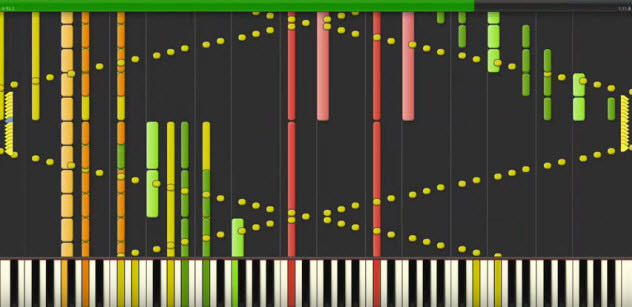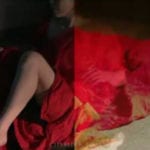 Politics
Politics  Politics
Politics  Weird Stuff
Weird Stuff Ten Bizarre Facts About The Doge Meme
 Our World
Our World 10 Ways Your Christmas Tree Is More Lit Than You Think
 Movies and TV
Movies and TV The 10 Coolest Stars to Set Sail on The Love Boat
 History
History 10 Things You Didn’t Know About the American National Anthem
 Technology
Technology Top 10 Everyday Tech Buzzwords That Hide a Darker Past
 Humans
Humans 10 Everyday Human Behaviors That Are Actually Survival Instincts
 Animals
Animals 10 Animals That Humiliated and Harmed Historical Leaders
 History
History 10 Most Influential Protests in Modern History
 Creepy
Creepy 10 More Representations of Death from Myth, Legend, and Folktale
 Politics
Politics 10 Political Scandals That Sent Crowds Into the Streets
 Weird Stuff
Weird Stuff Ten Bizarre Facts About The Doge Meme
 Our World
Our World 10 Ways Your Christmas Tree Is More Lit Than You Think
Who's Behind Listverse?

Jamie Frater
Head Editor
Jamie founded Listverse due to an insatiable desire to share fascinating, obscure, and bizarre facts. He has been a guest speaker on numerous national radio and television stations and is a five time published author.
More About Us Movies and TV
Movies and TV The 10 Coolest Stars to Set Sail on The Love Boat
 History
History 10 Things You Didn’t Know About the American National Anthem
 Technology
Technology Top 10 Everyday Tech Buzzwords That Hide a Darker Past
 Humans
Humans 10 Everyday Human Behaviors That Are Actually Survival Instincts
 Animals
Animals 10 Animals That Humiliated and Harmed Historical Leaders
 History
History 10 Most Influential Protests in Modern History
 Creepy
Creepy 10 More Representations of Death from Myth, Legend, and Folktale
10 21st-Century Music Genres Most People Haven’t Heard Of
Music evolves at such a rapid pace that it is often hard for us to keep up with the latest and greatest. Thanks to the lowered costs of recording equipment and the widespread use of personal computers, producing and releasing music is now so accessible that new genres seem to emerge every few months.
10 Black MIDI

Warning: Do not watch black MIDI videos if you are epileptic!
In the 1980s, the world of music was revolutionized by the invention of the Musical Instrument Digital Interface (MIDI). This new system streamlined the ability of electronic musical instruments and computers to “talk” to each other, making it possible to control notation, pitch, tempo, and countless other parameters at the push of a button. Today, you’d be hard-pressed to find artists who don’t use MIDI in some way as it has become ubiquitous with pop and electronic music.
The concept of MIDI has reached new extremes with the development of “black MIDI,” a music genre with a simple premise: Cram as many notes as humanly possible into a single composition. Black MIDI’s humble beginnings can be traced to 2009 when users of a popular Japanese video-sharing website began uploading clips of video and anime theme songs they had remixed in piano-learning program Synthesia.
What began as a niche hobby for many Japanese teens rapidly exploded into a full-blown Internet phenomenon. “Blackers,” as they affectionately call themselves, have since developed a tight-knit online community, released hundreds of songs, and created their own record labels catering to black MIDI musicians.
Although songs in the genre originally topped out at just a few hundred thousand notes, it is now common to find artists who can reach the one billion mark. According to the black MIDI leaderboards, the current record holder is Gingeas, who managed to fit over one trillion notes into his song “Armageddon v2.”
Notable artists: Gingeas, RetroUniversalHT, TheSuperMarioBros2
9 Kawaii Metal
A commonly held stereotype in the Western world is of the Japanese obsession with all things adorable. For the past few decades, kawaii (cute) culture has entrenched itself into many aspects of Japanese life, including food, clothing, toys, and even people’s behaviors and mannerisms. In 2009, one Japanese entrepreneur decided to take kawaii culture to the next level, mixing the cuddly schoolgirl aesthetic of Japanese pop music with the mind-numbing guitar riffs and crushing blast beats found in metal music.
Kawaii metal owes its origins to the band Babymetal and the enigmatic executive behind it, Kobametal. Originally formed as a spin-off from the J-pop group Sakura Gakuin, Babymetal has found much success in the past couple of years and not just in Japan. Their debut album charted well in Austria, Belgium, Holland, Germany, and even the US.
Perhaps Babymetal is so popular because of their juxtaposition of metal and J-pop, two genres on totally opposite ends of the musical spectrum. It is quite captivating to hear sparkling pop vocals over Slayer-esque metal instrumentals. The eerie persona embodied by the band could also be a factor. In an interview on fuse.tv, Kobametal claimed that the group’s actions are driven by “divine messages that come through the god of metal we called the fox god.” Or maybe they’re just surprisingly good.
Notable artists: Babymetal, Ladybaby, DOLL$BOXX
8 Lowercase
Although the phrase “less is more” was coined in 1855 by poet Robert Browning, it did not enter the public lexicon until architect Ludwig Mies van der Rohe adopted the idea as a principle for minimalist design in the 1960s. Decades later, musicians have taken the expression to heart, focusing on playing only a few notes to create ambiance rather than on more traditional musical elements like rhythm and melody.
Every day, we are bombarded by so much noise from cars, airplanes, appliances, and construction that more subtle forms of noise often go unnoticed. We don’t pay much attention to the wind humming or the pot bubbling on the stove. Lowercase, a subgenre of minimalist electronica, elaborates on this idea, using these disregarded “microsounds” and even silence to make something completely different than the type of music we’re used to hearing.
Lowercase was established in 2001 when Steve Roden released Forms of Paper, an album consisting solely of the sounds of rustling paper. Distorted and amplified using a computer, it was digitally arranged in a haunting 54-minute composition. Artists in the genre may use anything, including field recordings of rustling leaves, people breathing, or bells ringing in the distance.
On the Electro Acoustic Research website, Roden said, “[lowercase] bears a certain sense of quiet and humility; it doesn’t demand attention, it must be discovered.” That’s a refreshing statement considering the earsplitting “loudness wars” currently going on within popular music.
Notable artists: Steve Roden, Richard Chartier, Alva Noto
7 Seapunk
The 2010s have seen a huge rise in online subcultures, largely due to the increasing popularity of social media. Trends can blow up overnight, be the topic of conversation for a couple of days, and recede into obscurity with barely a moment’s notice. Nothing encompasses the ephemeral nature of modern life like seapunk, a micro-genre of electronic music which, for a brief time, was a big deal to a handful of people.
Originally called a “web joke with music” by The New York Times, seapunk was created by a group of online musicians with a shared nostalgia for the culture of the 1990s. The genre blends bouncy electronic music with the hypnotic sounds of ocean-themed video games (like Ecco the Dolphin or the water levels in Donkey Kong) and synthesized tropical instruments like marimbas and steel drums. Not just confined to music, seapunk also spawned a widely popular design trend which used aquatic imagery as well as every hue of turquoise imaginable.
In late 2012, the seapunk community was up in arms with the “co-optation” of the genre by Rihanna and Azealia Banks. Rihanna performed her hit song “Diamonds” on SNL in front of backgrounds highly reminiscent of genre pioneer Jerome LOL’s video for his song “Blockz.” Just a few days later, Banks released a seapunk-inspired music video for her song “Atlantis.”
Notable artists: Unicorn Kid, Blank Banshee, iamamiwhoami
6 Wizard Rock
In 1990, J.K. Rowling was on a crowded train from Manchester to London when the premise for Harry Potter suddenly materialized in her head. She spent the next four hours scribbling the details that would give birth to one of the most beloved literary series in history, going on to sell over 400 million copies worldwide. The Harry Potter craze has inspired both children and adults alike, spawning countless fan-made spin-offs, a real-life Quidditch league, and even an entire genre of music.
Wizard rock (sometimes known as “Wrock”) appeared in the US around 2002 with the Massachusetts band Harry and the Potters. The genre has since grown internationally, inspiring imitators far and wide and even inspiring Wrockstock, a yearly festival of wizard rock bands.
Wrock doesn’t adhere to a particular style of music but instead draws heavily on themes from the Harry Potter universe. Bands largely write songs from the perspectives of specific characters and will often don costumes to add a deeper level of immersion in their performances. Although fantastical literary references in music are hardly a new concept (Led Zeppelin famously referenced J.R.R. Tolkien’s kingdom of Middle-earth in a number of songs), no other franchise but Harry Potter has inspired an entire genre of music.
Notable artists: Harry and the Potters, Draco and the Malfoys, The Parselmouths
5 Witch House
Musicians have long been associated with the occult. In ancient times, shamans would perform incantations to summon spirits. In the 1990s, Norwegian black metal bands burned churches and murdered their own band members. In the late 2000s, the dark side of music saw a revival with the emergence of a little genre known as witch house.
Mixing the hazy atmosphere of 1980s goth bands like Cocteau Twins and The Cure with more conventional hip-hop and electronic dance music, witch house was originated by Massachusetts-based Salem in their 2010 album King Night.
Like seapunk, the genre implements a visual aesthetic that draws heavily from 1990s pop culture, most notably The Blair Witch Project, Twin Peaks, and Charmed. Other common elements of the genre are references to witchcraft, horror-inspired album art, and the use of triangles, crosses, and other symbols in artist names and song titles.
Witch house was largely seen as a reaction to chillwave, a concurrent micro-genre that emphasized the warm glow and summery vibes of pop music from the late ’70s and early ’80s. Although releases have slowed down significantly since its peak, a number of artists in the genre have found worldwide success.
Notable artists: Salem, Crystal Castles, oOoOO, Ritualz
4 Nintendocore
For many of us born in the 1980s and ’90s, we can thank Koji Kondo for having composed the sound track to our childhoods. Kondo penned some of the most unforgettable tunes in history for video games for the Super Mario and Legend of Zelda franchises, to name a few. His contributions revolutionized not only video games but the entire music industry. It would have been quite a feat for Kondo to have predicted the extent of his influence, which has reached into nearly every nook and cranny of the world.
Nintendocore fuses two unlikely allies: the 8-bit sounds of video game music pioneered by Kondo with the aggressiveness of hard-core punk and metal. Although the genre did not emerge until the early 2000s, the foundation was laid in the 1990s. Autoclave was the first band to cover a video game song; the last song on their self-titled album is the theme from Paperboy. Meanwhile, eccentric rockers Mr. Bungle used sounds from Super Mario Bros. in their eponymous debut album.
The first Nintendocore album was released in 2001 by Horse the Band. The conjunction between the album’s heavy guitar riffs and keyboards used to replicate 8-bit Nintendo sounds caught the attention of audiences everywhere, and the band has seen modest success in its nearly two decades of existence. The term “Nintendocore” was coined by the group’s front man to describe the album, although he originally used it as a joke. However, the term caught on, and the rest is history.
Notable artists: Horse The Band, The Advantage, Minibosses
3 Pirate Metal
Thanks to the success of films like Peter Pan, Hook, and Pirates of the Caribbean, we are all well versed in the pirate aesthetic: beards, tattoos, and lots of rum. Naturally, this image would seem to translate fairly well into the world of music. Musicians have long been known to don facial hair, tattoo their bodies, and drink copious amounts of alcohol. Thus, the term “pirate metal” may not seem like that much of a stretch after all.
The origins of pirate metal can be traced to Running Wild’s 1987 release of Under Jolly Roger. When the group’s early satanic imagery and political lyricism was not well received by the German population, they adopted the pirate persona that would influence dozens of bands some decades later.
Pirate metal is defined by the incorporation of pirate garb, folklore, and slang into their music. Groups may also use more traditional folk instruments like concertinas and dabble in the occasional sea chantey. The genre brings a more jovial tone to heavy metal, which is usually characterized by somberness, death, and destruction.
Notable artists: Alestorm, Running Wild, Lagerstein, Swashbuckle
2 Vaporwave
Among young people, disillusionment with mainstream society appears to be at an all-time high. Voter turnouts are steadily decreasing, and unreasonably large numbers of people endure chronic unemployment, particularly in Europe. The German word “weltschmerz” (world pain) describes the angst and cultural dissonance experienced by people when the world doesn’t live up to their expectations, a sentiment echoed by artists in the micro-genre vaporwave from the 2010s.
Vaporwave is characterized by its heavy sampling of smooth jazz and lounge music from the 1970s onward as well as pitched vocal samples and hazy electronic synths. The genre was formed almost by pure coincidence by Daniel Lopatin and James Ferraro, experimental musicians who released albums at around the same time that sounded eerily similar. Drenched in nostalgia and outdated retro aesthetics, the genre not only aims to take listeners back to simpler times but also to provide a contemporary critique of consumer culture and capitalism.
Like seapunk and witch house, vaporwave incorporates its own visual aesthetic to fit the music. Prominent imagery includes web design from the 1990s (think Angelfire and Neocities), outdated 3-D visuals, the use of Japanese characters in artist names and song titles, glitch art, and for no apparent reason, ancient Roman and Greek sculpture.
Notable artists: Macintosh Plus, Saint Pepsi, James Ferraro, Chuck Person
1 Harsh Noise Wall
Twentieth-century painter and composer Luigi Russolo is perhaps best remembered for his manifesto, The Art of Noises, which argued that the industrial revolution had given way to an abundance of new, once unfathomable sounds for humankind to enjoy. He felt constricted by contemporary music, which gave too much emphasis to melody. Instead, Russolo proposed a new form of music characterized by noise. He spent decades improvising experimental musical instruments which he called intonarumori.
Since Russolo’s time, noise music has inspired a wide array of genres, although most still remain on the fringes of the music scene. Few musicians have been able to reach a wide audience through noise because human ears value sounds that are neat, formulaic, and harmonic.
One of the most recent iterations of noise is harsh noise wall (HNW). To put it simply, HNW is a huge middle finger to everything we know about what makes music pleasurable. The genre is totally devoid of elements that we normally associate with music, like melody or structured rhythm. It is perhaps the most extreme type of music that currently exists, at times unsettling the listener by creating an unrelenting “wall” of noise devoid of dynamics or progression. HNW is unrelenting, cacophonous, and dissonant. At times, it can cause pain or an increased adrenal response. Listener discretion is advised.
Notable artists: Vomir, The Rita, Werewolf Jerusalem
Pedro is a freelance writer and musician currently residing in Vancouver, BC. In his free time, he likes to eat cheesecake and release music under the pseudonym LUSK.








